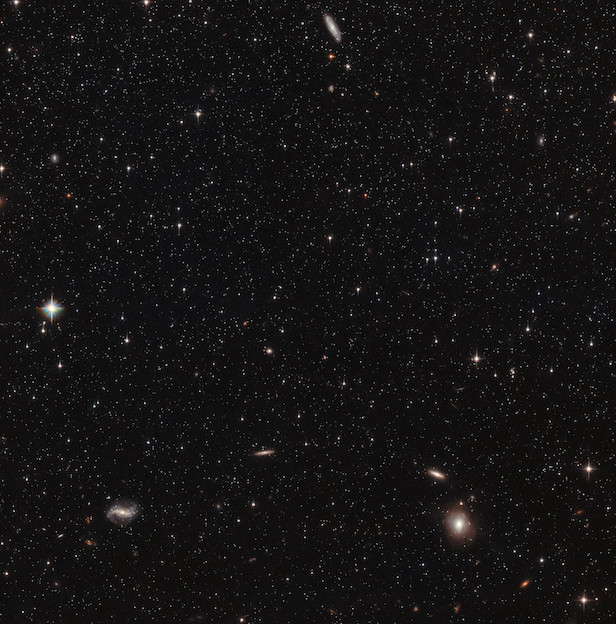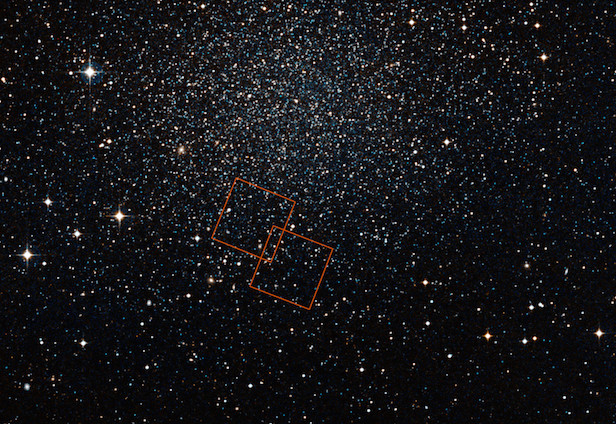Record-breaking star measurement puts dark matter on trial
The results provide more valuable evidence in support of our current model of the universe

The Sculptor Dwarf Galaxy lies 300,000 light-years away from Earth as it orbits the Milky Way. Image credit: ESA/Hubble/NASA
By combining the data of NASA and the European Space Agency’s (ESA) Hubble Space Telescope and ESA’s Gaia space observatory, astronomers have directly measured the 3D motions of individual stars in the nearby galaxy, the Sculptor Dwarf Galaxy. By doing this, they have achieved an accuracy that has never been measured before for a galaxy outside of our Milky Way. The results from this provide a test for our currently-accepted cosmological model, primarily regarding the distribution of dark matter, and also the galaxy’s trajectory through space.
A team of astronomers from two Dutch astronomy institutes, the Kapteyn Astronomical Institute and the Leiden Observatory, used the data from the two ESA missions, Hubble and Gaia, which span over 12 years. This data allowed them to accurately measure the exact 3D motions of stars within the Sculptor Dwarf Galaxy. This is the first time this has happened with such clarity for a galaxy outside of the Milky Way, 300,000 light years away from Earth.
Davide Massari, of Kapteyn Astronomical Institute, says, “with the precision achieved we can measure the yearly motion of a star on the sky which corresponds to less than the size of a pinhead on the Moon as seen from Earth.” This precision is thanks to the incredible resolution and accuracy of both space-based spacecraft. The long time span also made the movement of the stars easier to decipher.
The Sculptor Dwarf Galaxy is a dwarf spheroid galaxy, which is commonly known to be the most dark matter dominated objects in the universe. For this reason, it makes it an ideal target to understand the nature of dark matter. By indirectly observing the mysterious ‘invisible’ substance and determining how it is distributed within the galaxy, it tests the validity of the currently-accepted cosmological model. It’s stated that dark matter makes up 23 per cent of the universe, whereas normal matter – the matter we can directly see – makes up only four per cent.

The two boxes represent the two regions analysed from the Hubble and Gaia datasets. Image credit: ESA/Hubble/Digitized Sky Survey 2
“One of the best ways to infer the presence of dark matter is to examine how objects move within it,” explains Amina Helmi, also of Kapteyn Astronomical Institute. “In the case of dwarf spheroidals, these objects are stars.”
This analysis of the stellar motions within the dwarf galaxy can be translated into knowledge about the galaxy’s total mass, including dark matter, and how it’s distributed. The results show that the stars in the Sculptor Dwarf Galaxy move preferentially on elongated radial orbits. This is a strong indication that the density of dark matter increases towards the core of the galaxy.
A side effect of this work showed the trajectory of Sculptor’s trajectory around the Milky Way. The dwarf galaxy is currently moving around our home galaxy in a high-inclination elongated orbit, taking it further away than previously thought. At this moment in time, it is at its closest location to the Milky Way, but its orbit can take it as far as 725,000 light years away.
“With these pioneering measurements, we enter an era where measuring 3D motions of stars in other galaxies will become routine and will be possible for larger star samples. This will mostly be thanks to ESA’s Gaia mission,” concludes Massari.
Keep up to date with the latest reviews in All About Space – available every month for just £4.99. Alternatively you can subscribe here for a fraction of the price!




